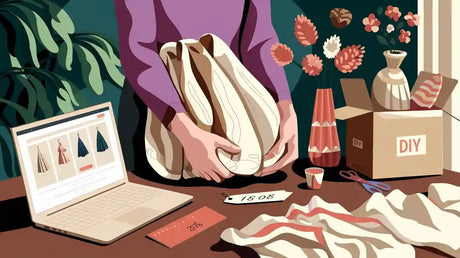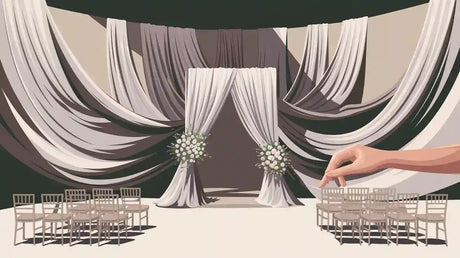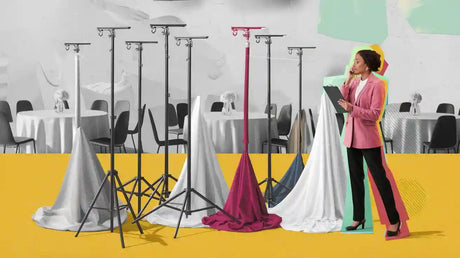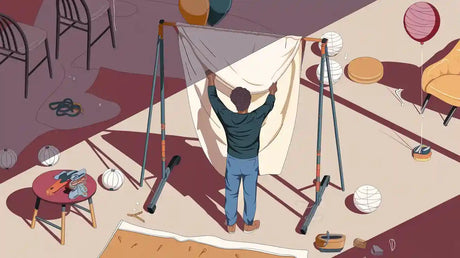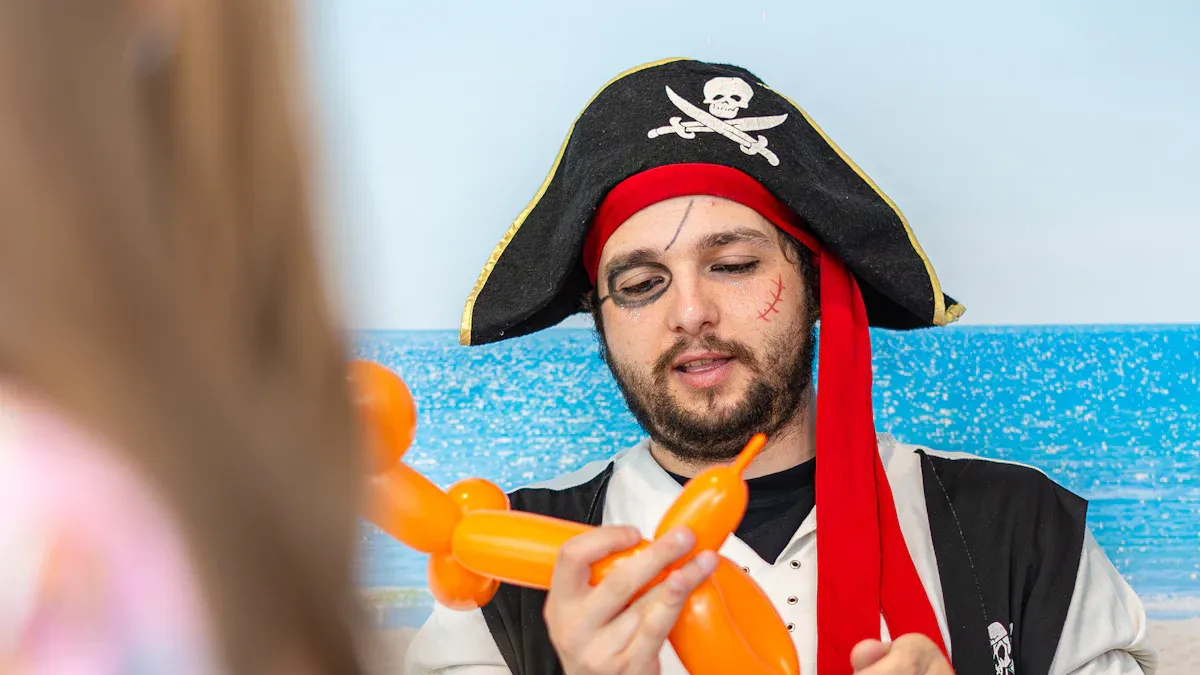
Have you ever wanted to make cool things with balloons? Balloon twisting is a fun activity that lets you be creative and make people happy. As a balloon twister, you can entertain others, feel more confident, and even find new chances to grow. Learning balloon twisting is easier than ever now!
Key Takeaways
Pick good balloons like 260Q for easier twisting and less popping. Begin with a colorful set to make it more exciting.
Use a balloon pump to save energy and time. Hand pumps are perfect for starters, and electric pumps are best for big tasks.
Practice simple twists every day to get better. Regular practice makes cooler balloon animals and builds your confidence.
Essential Supplies for a Balloon Twister
Picking the best balloons for balloon animals
The balloons you use matter a lot. Strong, high-quality balloons are easier to twist and less likely to pop. Look for long, sturdy balloons like the 260Q. These are great for beginners because they stretch well and keep their shape. Avoid cheap, thin balloons—they break easily and can ruin your work.
Tip: Start with a small pack of colorful balloons to practice. Bright colors make your balloon animals look more fun and exciting!
Balloon pump choices for beginners
Blowing up balloons by hand can be hard work. A good pump saves time and effort. Here’s a quick look at some popular pumps:
Balloon Pump |
Pros |
Cons |
|---|---|---|
Best Balloon Inflators |
Quiet, has manual and automatic modes |
Not very durable |
Party Zealot |
Fast, inflates 100 balloons in 30 minutes |
Hard to learn at first |
LiKee |
Cute design, inflates fast |
Can’t use helium |
NuLink |
Small, low-cost |
Noisy, nozzle issues |
PCFING |
Portable, has two nozzles, includes tying tool |
Hard to use with thin balloons |
Pick a pump that works for you. Manual pumps are cheap and simple for beginners. Electric pumps are better for big projects.
Extra tools for making balloon animals
Besides balloons and pumps, a few tools can help. A balloon tying tool makes tying knots easier and saves your fingers. Scissors are useful for cutting off extra balloon pieces. A marker can add fun details like eyes or patterns to your creations.
Note: Keep your tools in a small bag or box. This helps you stay organized and ready to create anytime!
How to Balloon Twist: Basics of Inflating and Tying
Proper techniques for inflating balloons
Inflating a balloon might seem simple, but doing it the right way makes all the difference. Start by attaching the balloon to the nozzle of your pump. Hold it firmly to prevent air from escaping. Pump steadily and stop when the balloon is about 90% full. This leaves some room for twisting without popping.
Here’s a quick comparison of inflation metrics to help you understand the process better:
Metric |
Value Range |
|---|---|
Deflation Rate |
0.004 to 0.013 µL/s |
Estimated Deflation Time |
10.2–28.1 s |
Avoid over-inflating, as it increases the chance of popping. If you’re using a manual pump, short, quick pumps work best. For electric pumps, keep an eye on the balloon to avoid overfilling.
How to tie balloons securely
Tying a balloon can be tricky at first, but practice makes it easier. Once inflated, pinch the neck of the balloon with your thumb and forefinger. Stretch the neck and wrap it around two fingers. Then, tuck the end through the loop and pull it tight. This creates a secure knot that won’t come undone.
If tying balloons hurts your fingers, try using a balloon tying tool. It’s a small gadget that makes the process faster and saves your hands from strain.
Safety tips for handling balloons
Safety is key when learning how to balloon twist. Always check your balloons for holes or weak spots before inflating. Weak balloons are more likely to pop unexpectedly. When twisting, avoid sharp objects nearby, as they can puncture the balloon.
In 2023, balloon-related activities recorded only four serious incidents, a significant drop compared to previous years. Most injuries happened during landing or handling, highlighting the importance of staying cautious. Keep balloons away from young children to prevent choking hazards.
Tip: Wear safety goggles if you’re working with balloons for long periods. This protects your eyes from sudden pops.
By mastering inflating and tying a balloon safely, you’ll be ready to create amazing balloon animals in no time!
Foundational Techniques for Balloon Animals
Key terminology every balloon twister should know
Before you dive into twisting, it’s helpful to learn some basic terms. These will make tutorials and instructions much easier to follow. Here are a few key ones:
Twist: The act of turning the balloon to create shapes or sections.
Lock Twist: A twist that locks two or more sections together, keeping them secure.
Pinch Twist: A small, tight twist used to create details like ears or noses.
Loop Twist: A twist that forms a loop, often used for legs, arms, or flower petals.
Softening: Letting a little air out of the balloon to make it easier to twist.
Tip: Keep these terms handy as you practice. They’ll help you understand the steps for making balloon animals and improve your confidence as a balloon twister.
Basic twists and folds for beginners
Mastering a few simple twists is the first step to creating amazing balloon animals. Start with these beginner-friendly techniques:
The Basic Twist:
Inflate your balloon, leaving about 3 inches uninflated at the end. Hold the balloon firmly and twist it 3–4 times in one direction. This creates a segment. Practice making multiple segments of the same size.The Lock Twist:
After making two segments, fold them together and twist them as one. This locks the segments in place and forms the foundation for many balloon animals, like the head and body of a balloon dog.The Pinch Twist:
Grab a small section of the balloon and twist it tightly. This creates a small bubble that sticks out, perfect for details like ears or flower centers.The Loop Twist:
Fold a section of the balloon into a loop and twist it at the base. This is great for making legs, wings, or petals.
Note: These twists are the building blocks of basic balloon animals. Once you’re comfortable with them, you’ll be ready to tackle more complex designs.
Practicing consistency in balloon twisting
Consistency is key when it comes to balloon twisting. Your balloon animals will look more polished and professional if the segments are even and the twists are secure. Here’s how you can practice:
Measure as You Go: Use your fingers or a ruler to measure each segment. This ensures uniformity in your designs.
Practice Daily: Set aside 10–15 minutes each day to practice your twists. Repetition helps you build muscle memory.
Embrace Mistakes: Don’t get discouraged if your balloon pops or your design doesn’t turn out as planned. Every mistake is a chance to learn and improve.
Experiment with Designs: Try combining different twists to create your own unique balloon animals. This helps you develop your personal style as a balloon twister.
Seek Feedback: Show your creations to friends or family and ask for their thoughts. They might notice details you can improve.
Fun Fact: Even professional balloon twisters started with basic balloon animals and simple techniques. With consistent practice, you’ll see your skills improve in no time!
By learning these foundational techniques, you’ll have the tools you need to create balloon animals that impress and delight. Remember, every twist brings you closer to mastering this fun and creative skill!
Step-by-Step Guide to Make Balloon Animals
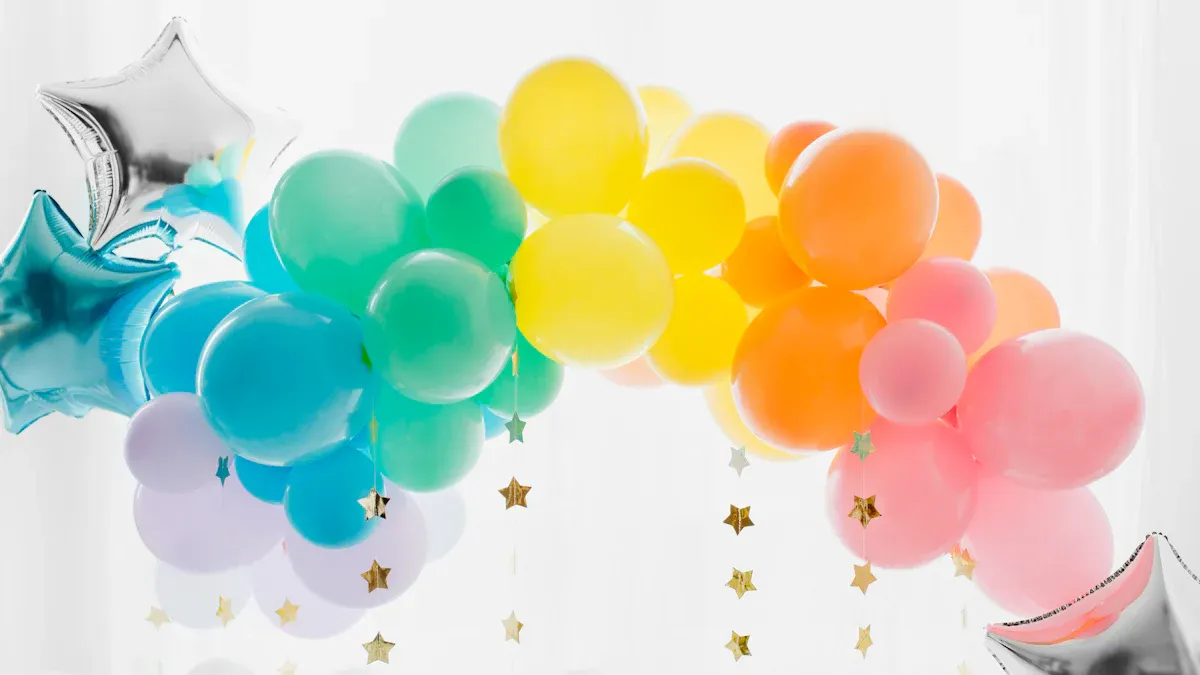
How to make a balloon dog
The balloon dog is one of the most popular and beginner-friendly balloon animals. Follow these steps to create your first balloon dog:
Inflate the balloon: Use a #260 pencil balloon and inflate it, leaving about 10 inches uninflated at the end. Let out a little air to soften the balloon, then tie it securely.
Make the head and ears: Twist a small bubble near the nozzle end for the dog’s nose. Next, twist two equal-sized bubbles for the ears. Fold the two ear bubbles together and lock them with a twist.
Form the neck and front legs: Twist a longer bubble for the neck. Then, twist two equal-sized bubbles for the front legs. Fold the leg bubbles together and lock them with a twist.
Create the body and back legs: Twist another long bubble for the body. Finally, twist two more equal-sized bubbles for the back legs. Fold and lock them together, just like the front legs.
Adjust and shape: Gently adjust the legs and ears to make the dog stand upright. You’ve just made your first balloon dog!
Tip: Practice twisting evenly to keep the dog’s body parts proportional. This will make your balloon animals look more polished.
How to make a balloon sword
A balloon sword is simple to make and always a hit with kids. Here’s how you can make one:
Inflate the balloon: Use a #260 balloon and inflate it almost completely, leaving about an inch uninflated at the end. Tie it off securely.
Create the handle: Fold the balloon about 6 inches from the tied end to form a loop. Twist the loop at the base to secure it. This will be the sword’s handle.
Shape the blade: Straighten the remaining length of the balloon to form the blade. Adjust the handle and blade to ensure the sword looks balanced.
Note: Balloon swords are great for beginners because they require only a few twists. They’re also perfect for practicing consistency in your twists.
How to make a balloon hat
Balloon hats are fun, colorful, and easy to customize. Follow these steps to make a basic balloon hat:
Measure the head: Inflate a #260 balloon, leaving about 4 inches uninflated at the end. Wrap the balloon around your head (or someone else’s) to measure the size. Twist the balloon where it overlaps to form a circle.
Create the base: Twist the remaining length of the balloon into a spiral or loop to add some flair to the hat. Secure the twists by locking them in place.
Add decorations: Use additional balloons to create shapes like stars, flowers, or loops. Attach these to the base of the hat for extra style.
Fun Fact: Balloon hats are a great way to experiment with combining multiple balloons. They let you explore your creativity while making balloon animals.
By following these step-by-step instructions, you’ll be able to make balloon animals that impress your friends and family. Start with these simple designs, and you’ll gain the confidence to try more complex creations, like learning how to make a balloon swan or other intricate designs.
Progressing to Advanced Balloon Animals
How to make a balloon flower
Ready to take your balloon animals to the next level? Let’s start with a balloon flower! It’s colorful, fun, and perfect for impressing your friends.
Inflate the balloon for the petals: Use a #260 balloon and leave about 4 inches uninflated. Twist it into six equal loops to form the petals. Lock the loops together by twisting their bases.
Create the stem: Inflate a green balloon almost fully. Tie it off and push the nozzle through the center of the petals. This secures the flower to the stem.
Add details: Twist a small bubble at the top of the stem to create the flower’s center. Adjust the petals to make them even.
Tip: Experiment with different colors for the petals to make your flower stand out!
How to make a balloon monkey
A balloon monkey is a bit more advanced but super rewarding to make. Here’s how you can do it:
Inflate the balloon: Leave about 5 inches uninflated. Twist a small bubble for the monkey’s nose, followed by two larger bubbles for the ears. Lock the ears together with a twist.
Form the body: Twist a long bubble for the neck, two equal bubbles for the arms, and another long bubble for the body. Lock the arms together and repeat the process for the legs.
Add the tail: Use the remaining length of the balloon to create a curly tail by wrapping it around your finger and releasing it slowly.
Fun Fact: Balloon monkeys are a hit at parties because they’re so playful and unique!
Combining multiple balloons for complex designs
Once you’ve mastered basic balloon animals, it’s time to combine multiple balloons for more intricate creations. For example, you can use one balloon for a giraffe’s body and another for its long neck. Or, try making a butterfly by combining balloons for the wings and body.
Here’s how to get started:
Plan your design: Sketch your idea first. This helps you figure out how many balloons you’ll need.
Use connectors: Twist balloons together at key points to secure them.
Experiment: Don’t be afraid to try new shapes and combinations. Creativity is key!
Pro Tip: Combining balloons lets you create larger, more detailed balloon animals that will wow everyone.
By practicing these advanced techniques, you’ll soon be creating balloon animals that are true works of art. Keep experimenting and have fun!
Troubleshooting Tips for Beginner Balloon Twisters
Even experts face issues when twisting balloons, especially at first. Don’t stress—these simple tips can solve common problems and keep your balloon creations looking awesome.
Fixing popped balloons
Popped balloons can be annoying, but they’re normal when learning. If one bursts, stay calm and check why it happened. It might be over-inflated or have a weak spot. Always leave some space uninflated to avoid popping. If it bursts while twisting, let out a little air to soften it before trying again.
Keep extra balloons nearby. This way, you can replace a popped one quickly and keep going. With practice, you’ll learn to twist gently and avoid popping balloons altogether.
Correcting uneven twists
Uneven twists can make your balloon animals look strange. To fix this, measure each section as you twist. Use your fingers to guide the size and keep it even. If a twist looks wrong, untwist it and try again. Practicing basic twists every day will help you get better.
Pro Tip: Start with easy designs like a balloon dog to build your skills.
Avoiding common inflation mistakes
Inflating balloons the right way is important for good designs. Over-inflating makes them pop, while under-inflating gives you less to work with. Pump steadily and stop when the balloon is about 90% full.
If inflating is hard, use a manual pump for more control. Electric pumps are faster but trickier for beginners. With time, you’ll figure out the best way to inflate for each design.
By following these tips, you’ll fix balloon problems easily and enjoy learning this fun skill!
Balloon twisting is all about practice and having fun. The more you twist, the better you’ll get! Once you’ve mastered the basics, try challenging yourself with advanced designs.
Tip: Check out online tutorials, books, or local workshops. These resources can help you learn faster and spark new ideas. 🎈
FAQ
What should I do if my balloon keeps popping?
Check for over-inflation or weak spots. Inflate the balloon to about 90% and twist gently. Keep sharp objects away from your workspace. 🎈
How long does it take to learn balloon twisting?
With daily practice, you can master basic designs in a week or two. Advanced creations might take a few months, but it’s all about having fun!
Can I reuse popped balloons?
Unfortunately, no. Popped balloons can’t be reused for twisting. Always keep extra balloons handy to replace any that burst during practice.
Tip: Don’t get discouraged by popped balloons. They’re part of the learning process!

